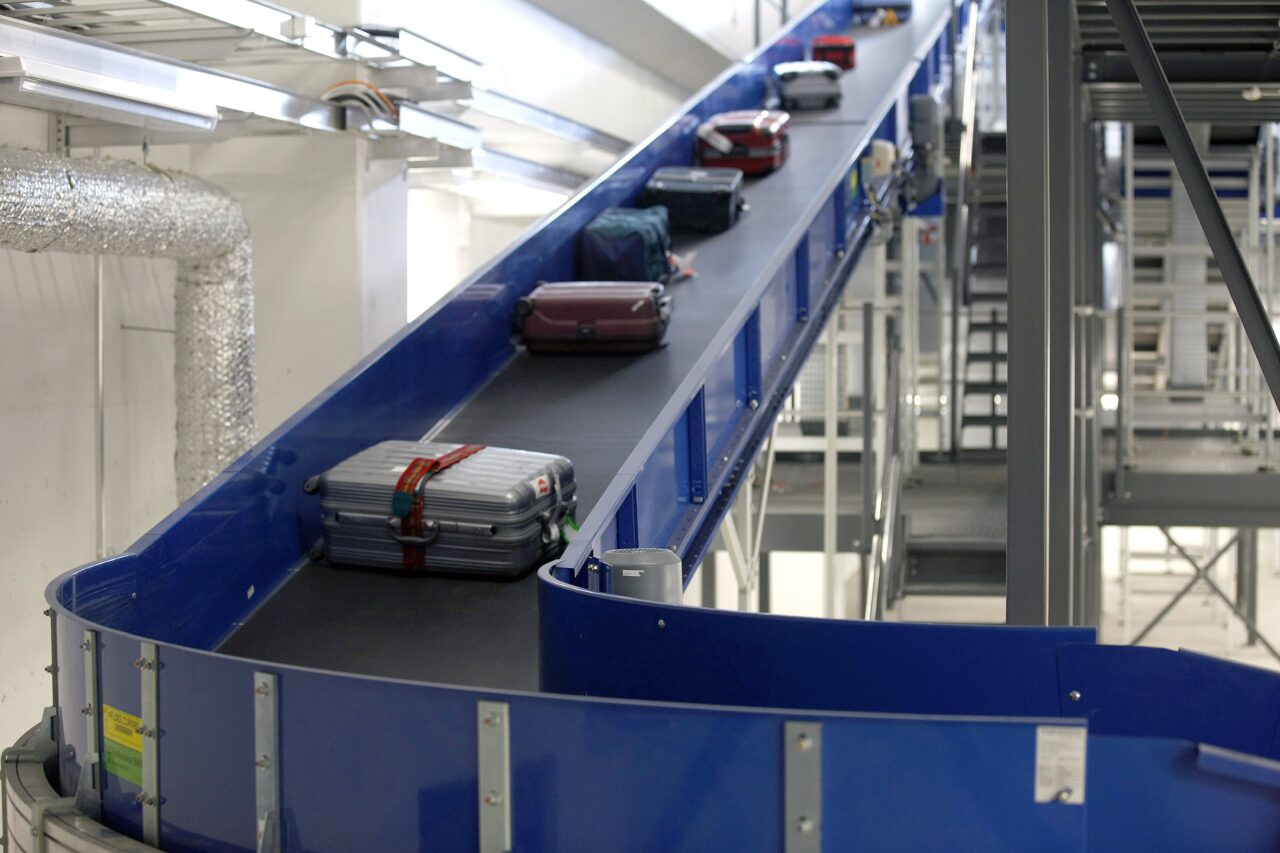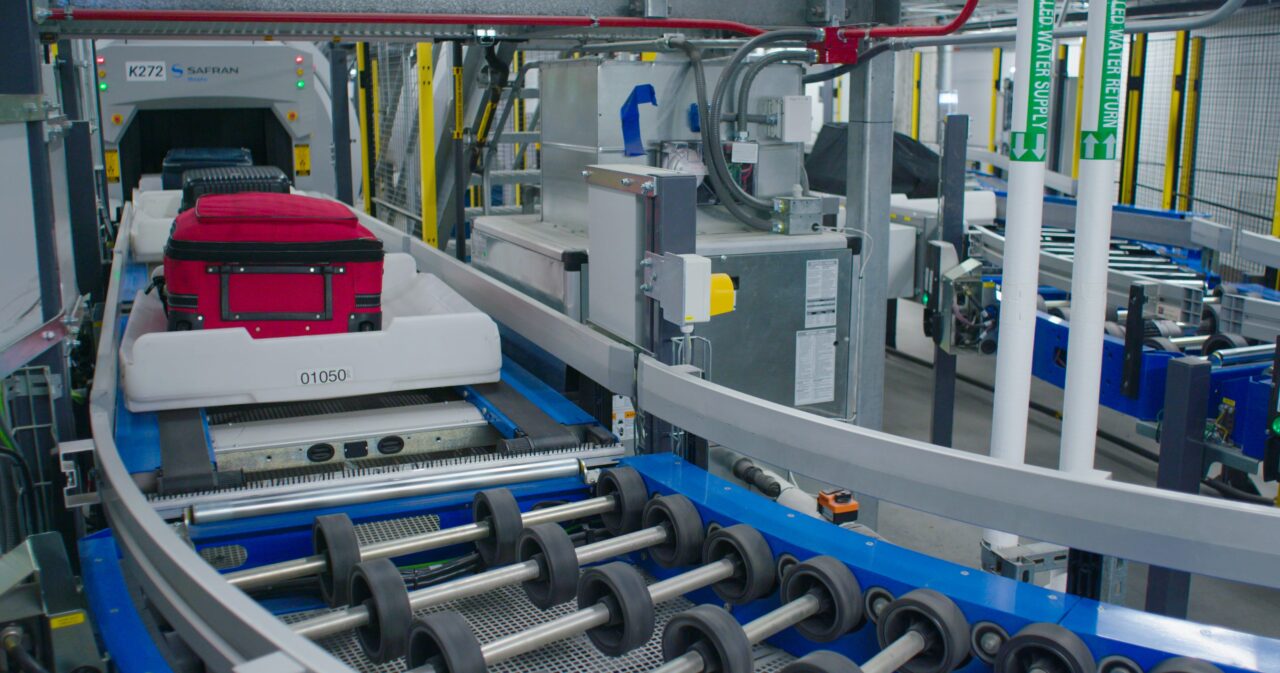Why airports should invest wisely in their BHS
A BHS is more of a cost than an added value – no airport really wants to have one. The ideal solution, although completely impractical, would be passengers taking their luggage to the gate.

By Moritz Bender
Airports are principally built and designed to serve the passengers – often to project an aesthetic image of the country or city they’re based in.
And it’s not uncommon to find the BHS tucked away in the basement: a system that doesn’t really fit its surroundings and takes the baggage up and down and so on. As a general rule of thumb, around 5 percent of total investment in a new or redeveloped airport is spent on the BHS.
Contractors tend to have more expertise concerning building projects and less so baggage projects. Likewise the contractor won’t give future operations too much consideration because the system, once it’s built, won’t be part of their responsibility.
So right from the beginning of a BHS’s life cycle, it’s all about the CAPEX. Few consider the OPEX because the final operator is not even part of the construction project discussion.
While it’s understandable airports regard a new lounge or restaurant as more of an added value, the wrong kind of BHS is a huge drain on resources.
If a system completely breaks down, it will cause massive delays and severely impact the customer satisfaction levels momentarily lifted by the pretty foyer.
There could be as many as 20,000 unsorted bags in a broken down system, and they all need to be taken out, piled on top of one another and manually sorted.

It’s situations like this that underline how BHS is the airport’s most critical infrastructure – only the IT systems come close.
If a staircase is broken, or you need to reassign a gate, the passengers will still get on their flight. But if your BHS breaks down, you’re facing lengthy delays.
Post-pandemic, the technology underpinning most airports’ BHS solutions needs an overhaul. The COVID-19 restrictions demonstrated how airports need greater flexibility, as conditions can change overnight.
However, many are reluctant to upgrade their BHS, even though other airports using intelligent systems are optimising their handling capability, reducing their labour costs and all but eliminating errors.
Not only does switching to digital, automated solutions enable airports to use higher capacity systems in the same space occupied by existing BHS facilities, along with fewer resources, but they get to recuperate their investment thanks to significantly lower life-cycle costs.
Not only that, but they enable the airport to make savings of $3.5 million a year, enabling the airport to recuperate its investment after just five years. Over 20 years, they can save around $70 million.
But a modern BHS isn’t always the best option open to medium and small-sized airports – sometimes an upgrade of the existing BHS will make more sense.
First the airport must make make a number of assessments, including:
Answering these questions will determine what kind of BHS upgrade they will benefit most from.
Even if a modern BHS does not save space for the airport, it won’t occupy more space than the system it is replacing. But it will always improve functionality.
Screening is a good example. The amount of space required by a modern and outdated BHS is comparable, but their capacity for screening bags is not. For an outdated system to match the performance of a modern system, it would require far more space.
With a modern BHS, far fewer bags will require manual inspection or re-screening, and when they do, staff aren’t required to manually handle them.
In general, the modern system will accomplish far more with its space: from eliminating system jams and no-reads to providing 100 percent tracking, a high sortation accuracy rate and a continuous flow of luggage.
But it is not always easy to save space. The layout of the existing terminal might require an intricate design that requires more vertical space than the existing BHS.

Not only does the OPEX of a new system make sound economic sense, but the CAPEX need not be too expensive – providing the footprint is minimised during the design.
Plug and play modules, a popular installation method, are more efficient to install– and a compact design will also reduce costs. Furthermore, less equipment tends to be involved – another plus.
With some BHS, the CAPEX can start to pay dividends after five years of use, as an airport can expect to save on their OPEX in a large number of ways:
Post-pandemic, BHS are becoming more flexible. The crisis taught the aviation industry to expect the unexpected in the future – and adaptability to changing circumstances is key.
BHS too heavily reliant on manual intervention will continue to struggle amid labour shortages. But it’s no good investing in a new system if a new way of travelling renders it obsolete overnight.
Modern BHS are accordingly designed with a prolonged life cycle in mind – and airports are advised to consider their future role when making changes.
Due to the nature of air travel, baggage handling is not one of the biggest priorities, but it is an airport’s most critical infrastructure. So why are so many airports not investing in upgrading their BHS when the benefits are so obvious. Not only will it increase their agility in the future, but it will enable them to use their space more efficiently and make huge savings once the initial investment has been paid off: $70 million over 20 years is not to be sniffed at.